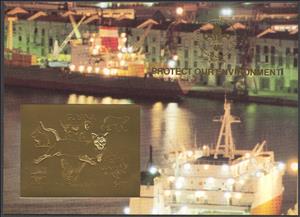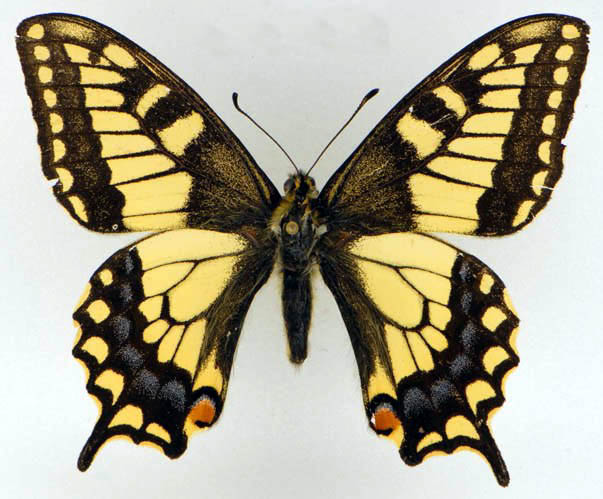Souvenir Sheet: Dog, Bear, Rabbit, Puma, Butterfly, Triceratops (Guyana 1993)
Dog, Bear, Rabbit, Puma, Butterfly, Triceratops (Guyana 1993)
01 September (Guyana ) within release Boy Scouts and Environmental Protection goes into circulation Souvenir Sheet Dog, Bear, Rabbit, Puma, Butterfly, Triceratops face value 600 Guyanese dollar
| Souvenir Sheet Dog, Bear, Rabbit, Puma, Butterfly, Triceratops in catalogues | |
|---|---|
| Michel: | Mi: GY BL309 |
| Colnect codes: | Col: GY 1993.09.01-19 |
Souvenir Sheet is horizontal format.
Also in the issue Boy Scouts and Environmental Protection:
- Souvenir Sheet - Dog, Bear, Rabbit, Puma, Butterfly, Triceratops face value 600;
- Souvenir Sheet - Dog, Bear, Rabbit, Puma, Butterfly, Triceratops face value 600;
- Souvenir Sheet - Mushroom, Butterfly, Penguin, Triceratops, Sea Snail, Turtl… face value 600;
- Souvenir Sheet - Mushroom, Butterfly, Penguin, Triceratops, Sea Snail, Turtl… face value 600;
- Souvenir Sheet - Penguin, Butterfly, Owl, Rock, Swordfish, Orchid face value 600;
- Souvenir Sheet - Penguin, Butterfly, Owl, Rock, Swordfish, Orchid face value 600;
Souvenir Sheet Dog, Bear, Rabbit, Puma, Butterfly, Triceratops it reflects the thematic directions:
Bears are carnivoran mammals of the family Ursidae (/ˈɜːrsɪdiː, -daɪ/). They are classified as caniforms, or doglike carnivorans. Although only eight species of bears are extant, they are widespread, appearing in a wide variety of habitats throughout most of the Northern Hemisphere and partially in the Southern Hemisphere. Bears are found on the continents of North America, South America, and Eurasia. Common characteristics of modern bears include large bodies with stocky legs, long snouts, small rounded ears, shaggy hair, plantigrade paws with five nonretractile claws, and short tails.
Lepidoptera or lepidopterans is an order of winged insects which includes butterflies and moths. About 180,000 species of the Lepidoptera have been described, representing 10% of the total described species of living organisms, making it the second largest insect order (behind Coleoptera) with 126 families and 46 superfamilies, and one of the most widespread and widely recognizable insect orders in the world
The cougar (Puma concolor) (/ˈkuːɡər/, KOO-gər), also known as the panther, mountain lion, catamount and puma, is a large cat native to the Americas. It inhabits North, Central and South America, making it the most widely distributed wild, terrestrial mammal in the Western Hemisphere, and one of the most widespread in the world. Its range spans the Canadian Territory of Yukon, British Columbia and Alberta provinces, the Rocky Mountains and areas in the Western United States. Further south, its range extends through Mexico to the Amazon Rainforest and the southern Andes Mountains in Patagonia. It is an adaptable, generalist species, occurring in most American habitat types. It prefers habitats with dense underbrush and rocky areas for stalking but also lives in open areas.
Dinosaurs are a diverse group of reptiles of the clade Dinosauria. They first appeared during the Triassic period, between 243 and 233.23 million years ago (mya), although the exact origin and timing of the evolution of dinosaurs is a subject of active research. They became the dominant terrestrial vertebrates after the Triassic–Jurassic extinction event 201.3 mya and their dominance continued throughout the Jurassic and Cretaceous periods. The fossil record shows that birds are feathered dinosaurs, having evolved from earlier theropods during the Late Jurassic epoch, and are the only dinosaur lineage known to have survived the Cretaceous–Paleogene extinction event approximately 66 mya. Dinosaurs can therefore be divided into avian dinosaurs—birds—and the extinct non-avian dinosaurs, which are all dinosaurs other than birds.
The domestic dog (Canis lupus familiaris or Canis familiaris) is a member of genus Canis (canines) that forms part of the wolf-like canids, and is the most widely abundant carnivore. The dog and the extant gray wolf are sister taxa, with modern wolves not closely related to the wolves that were first domesticated. The dog was the first domesticated species and has been selectively bred over millennia for various behaviors, sensory capabilities, and physical attributes. Their long association with humans has led dogs to be uniquely attuned to human behavior and they are able to thrive on a starch-rich diet that would be inadequate for other canid species. Dogs vary widely in shape, size and colours. Dogs perform many roles for people, such as hunting, herding, pulling loads, protection, assisting police and military, companionship and, more recently, aiding handicapped individuals. This influence on human society has given them the sobriquet "man's best friend".
A ship is a large watercraft that travels the world's oceans and other sufficiently deep waterways, carrying passengers or goods, or in support of specialized missions, such as defense, research and fishing. Historically, a "ship" was a sailing vessel with at least three square-rigged masts and a full bowsprit. Ships are generally distinguished from boats, based on size, shape and load capacity.






